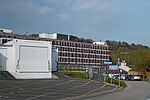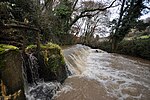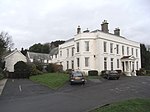Manor of Raleigh, Pilton

The historic manor of Raleigh, near Barnstaple and in the parish of Pilton, North Devon, England, was the first recorded home in the 14th century of the influential Chichester family of Devon. It was recorded in the Doomsday Book of 1086 together with three other manors that lay within the later-created parish of Pilton. The manor lies above the River Yeo on the southern slope of the hill on top of which stand the ruins of the Anglo-Saxon hillfort called Roborough Castle. Part of the historic manor of Raleigh is now the site of the North Devon District Hospital. Pilton as a borough had existed long before the Norman Conquest and was one of the most important defensive towns in Devon under the Anglo-Saxons; it is now a northern suburb of Barnstaple. On modern maps, an area of the Yeo valley on the eastern edge of Pilton is marked as Raleigh.
Excerpt from the Wikipedia article Manor of Raleigh, Pilton (License: CC BY-SA 3.0, Authors, Images).Manor of Raleigh, Pilton
Roborough Road, North Devon Derby
Geographical coordinates (GPS) Address Nearby Places Show on map
Geographical coordinates (GPS)
| Latitude | Longitude |
|---|---|
| N 51.094 ° | E -4.0507 ° |
Address
Roborough Road
Roborough Road
EX31 4JE North Devon, Derby
England, United Kingdom
Open on Google Maps









